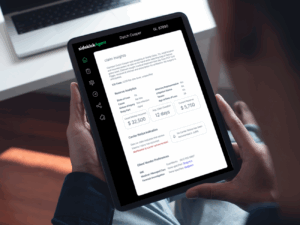June 23, 2022
By Tai Batchelor, head of liability, New Zealand
For loss adjusters handling service and repairs claims, how relevant are terms and conditions (T&C) when enquiring with an insured?
In NZ, loss adjusters involved in service and repair liability claims typically come from a mechanical or motor vehicle assessment/claims background. Whilst mechanical knowledge and an understanding of the cause when investigating any given service and repair claim is vital, it is equally important that the contractual arrangements involved be properly established and reported. For some loss adjusters, this can be unfamiliar territory and as such, there may be a tendency to give less focus to this aspect of their enquiry. The outcome of doing so however, could be to detriment of the client.
Whilst not many of our clients require us to comment on legal liability and/or policy response issues in our reports, service and repair claims are becoming more complex — often with multiple parties involved in the assessment. It’s essential that the loss adjuster obtains all relevant contract information relating to the works undertaken at the time. Obtaining and reporting on all relevant information in this regard ensures that our clients are put in the best possible position to consider policy response and potential legal liability.
Real world examples
Recently, a client’s liability manager questioned whether the contract information reported by a loss adjuster was complete and accurate. In his report, the loss adjuster stated that “the insured had no terms and conditions of trade that applied to the matter at hand”. As it transpired however, the insured did have written terms and conditions (T&C) that applied. In this case, the loss adjuster involved had simply asked the wrong person (insured employee) and had accepted on face value what he had been told. The given answer could have drastically affected the claim outcome.
In this specific example, a third-party claimant’s logging truck had sustained irreparable engine damage after an omission by the insured’s employee. Estimated repair costs were upwards of $60,000 and a claim had been initiated for loss of use of the truck. By virtue of a signed declaration contained in the claimant’s credit application with the insured and the associated T&C that the claimant had signed and agreed to, it was deemed by insurers that the insured had limited its liability to the claimant customer in contract and tort (negligence) for any loss or damage. This relates to the cost of the services being provided and that the insured had excluded its liability for any consequential loss.
Lessons learned
Clients depend on loss adjusters to obtain relevant information that puts them in a position to make informed decisions around policy response and legal liability. When requesting contract information from insureds it’s important to direct your enquiry to the correct person. Otherwise, as we have seen in the example above, you may receive incorrect or possibly skewed information.
Contract information that might be obtained as part of the service and repair liability enquiry could include:
- An overview of the contractual matrix: the names of parties/entities involved, who did what for whom on what terms, what was agreed and the price paid.
- Quotations: these generally define the agreed works and the names of the parties, and may allude to applicable T&C and specifications/standards.
- Work orders: these may also define the agreed works, specifications/standards, confirm dates and names of parties, and may also allude to applicable T&C.
- Invoices (for original work): these confirm the works supposedly completed (and charged), the price paid, and the parties, and may allude to applicable T&C.
- Credit applications: By virtue of signing a credit application with the insured, the applicant (customer) may agrees that the insured’s T&C apply to all goods and services provided by the insured. This may serve as strong evidence of what the customer agreed to and further, that they had read, made aware of and agreed to the T&C before the subject works were completed.
- T&C : T&C may limit the insured’s liability to the price of the services/goods provided and/or exclude the insured’s liability in tort, contract and for consequential loss claims altogether.
Obtaining the above information and reporting accordingly may assist a client to properly ascertain contractual/legal liability of the insured (and possibly anyone else, for recovery purposes) and with whom relevant insurance obligations may lie. This information combined with detailed background information about the parties association and how the contract was formed may also assist a client to decide on whether T&C reported by the adjuster might be enforceable. Fortunately, in our logging truck example, the insured’s T&C (and a copy of the relevant signed credit application) were able to be retrospectively obtained by the loss adjuster involved. After careful consideration by the client of these documents and the background information reported by the loss adjuster, an offer reflecting the extent of its insured’s legal liability under the applicable T&Cs – one substantially less than the $60,000 (plus loss of use) being claimed – was made to the claimant.
As a general rule of thumb, when undertaking a service and repair claim investigation, particularly in a business-to-business (B2B) situation involving a commercial vehicle used for commercial purposes, get the applicable T&C and associated contract documents, and be sure to direct your enquiry to the right person when requesting them.
With one of the largest groups of liability loss adjusters in New Zealand, Sedgwick stands ready to support and resolve the challenges businesses face every day. For more information, visit our website or read the brochure.



